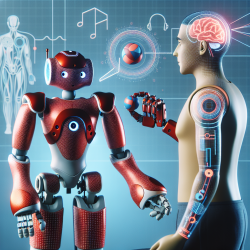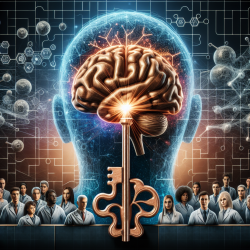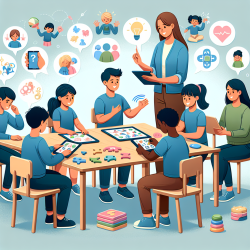As a practitioner dedicated to creating positive outcomes for children, staying informed about the latest advancements in rehabilitation therapy is crucial. One such advancement is the use of the NAO robot for cooperative rehabilitation training, as presented in the research article "NAO robot for cooperative rehabilitation training." This innovative approach offers promising results for individuals with impaired upper limb functions.
In this blog, we will explore how you can implement the findings of this research to enhance your therapeutic practices and improve outcomes for your patients.
Understanding the NAO Robot's Role in Rehabilitation
The NAO robot, developed by Aldebaran Robotics, is an autonomous, programmable social robot equipped with various sensors that enable it to interact with humans through vision, speech, hearing, and touch-sensing. The research focused on using the NAO robot to instruct and demonstrate rehabilitation exercises for individuals with upper limb impairments.
Key Findings from the Research
The research demonstrated that the NAO robot could successfully instruct and demonstrate upper-extremity rehabilitation exercises for both single and multi-joint movements. The exercises were programmed using Choregraphe, a graphical programming interface, and included:
- Shoulder abduction/adduction
- Vertical flexion/extension
- Internal/external rotation
- Elbow flexion/extension
In addition to these exercises, the NAO robot engaged participants in complex games that represented multi-joint movement exercises, further enhancing the rehabilitation process.
Implementing the NAO Robot in Your Practice
To integrate the NAO robot into your rehabilitation therapy sessions, consider the following steps:
- Familiarize Yourself with the NAO Robot: Understand the robot's capabilities, sensors, and programming interface (Choregraphe). This knowledge will help you customize the exercises to meet your patients' specific needs.
- Create a Library of Exercises: Develop a set of rehabilitation exercises using Choregraphe. Ensure that the exercises target the relevant joints and movements for your patients.
- Engage Patients in Cooperative Exercises: Use the NAO robot to instruct and demonstrate the exercises. Encourage patients to interact with the robot, enhancing their motivation and engagement in the therapy.
- Monitor and Adjust: Continuously monitor the patients' progress and adjust the exercises as needed. The NAO robot's ability to provide real-time feedback can be invaluable in this process.
Encouraging Further Research
While the research on the NAO robot for cooperative rehabilitation training is promising, it is essential to continue exploring its potential and refining its applications. Encourage your colleagues and fellow practitioners to engage in further research and share their findings. Collaborative efforts can lead to more effective and innovative rehabilitation therapies.
Conclusion
Integrating the NAO robot into your rehabilitation therapy sessions can significantly enhance the outcomes for children with upper limb impairments. By leveraging this innovative technology, you can provide more engaging, effective, and personalized therapy sessions for your patients.
To read the original research paper, please follow this link: NAO robot for cooperative rehabilitation training.










